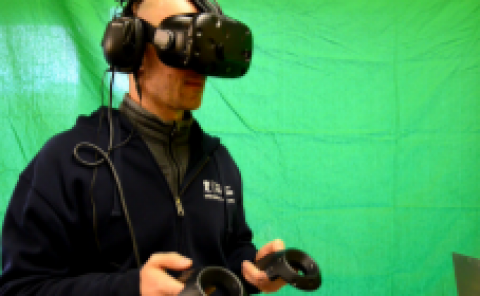Multimodal Biosensing for Vestibular Network-Based Cybersickness Detection
PubDate: December 2021
Teams: University of Glasgow;Shanghai Jiao Tong University;University of California San Francisco
Writers: Gang Li; Mark Mcgill; Stephen Brewster; Chao Ping Chen; Joaquin Anguera; Adam Gazzaley; Frank Pollick
PDF: Multimodal Biosensing for Vestibular Network-Based Cybersickness Detection

Abstract
Virtual reality (VR) has the potential to induce cybersickness (CS), which impedes CS-susceptible VR users from the benefit of emerging VR applications. To better detect CS, the current study investigated whether/how the newly proposed human vestibular network (HVN) is involved in flagship consumer VR-induced CS by simultaneously recording autonomic physiological signals as well as neural signals generated in sensorimotor and cognitive domains. The VR stimuli were made up of one or two moderate CS-inducing entertaining task(s) as well as a mild CS-inducing cognitive task implemented before and after the moderate CS task(s). Results not only showed that CS impaired cognitive control ability, represented by the degree of attentional engagement, but also revealed that combined indicators from all three HVN domains could together establish the best regression relationship with CS ratings. More importantly, we found that every HVN domain had its unique advantage with the dynamic changes in CS severity and time. These results provide evidence for involvement of the HVN in CS and indicate the necessity of HVN-based CS detection.


